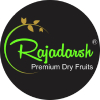Did you know that cashews are not actually nuts, but rather seeds? They are seeds that grow on the cashew apple, which is a fruit native to Brazil. The process of extracting cashew seeds involves several steps, including shelling, drying, roasting, and sometimes even steaming. However, before they can be consumed, cashews must also undergo a meticulous process to remove the toxic shell oil, which can cause skin irritation if not properly handled. This makes cashew processing quite intricate and fascinating!
PROCESSING OF CASHEW NUTS
Drying under Sun
Drying raw cashews in the sun is a meticulous art. Once separated from their shells, cashews bask in the sun’s warmth for at least two days. Regular stirring ensures even drying until moisture content falls between 8-10%. This process isn’t just functional; it’s a tradition. Sun-drying enhances flavor, texture, and shelf life while preserving sustainability. Each cashew absorbs the sun’s essence, creating a unique taste prized by aficionados. Embracing this time-honored practice honors nature’s bounty and craftsmanship. In every bite, the sun-dried cashew offers a sensory journey that captivates and nourishes, embodying the artistry of traditional methods.


Steaming
Once sun-dried, the raw cashew nuts make their way to the processing factory. Rajadarsh favors the steaming technique to prepare the nuts for further processing. This method involves subjecting the raw cashew nuts to steam, which softens the hard outer shell, facilitating easier separation to obtain the kernel.
Utilizing steam cookers is integral to this process. These cookers come in diverse capacities tailored to meet specific processing needs. Additionally, a mechanized feeding system streamlines the cooking process. In the case of larger cookers, conveyors efficiently transport the output to cooling silos post-cooking.
Shelling and Husking
Upon receiving raw cashews, the factory undertakes the crucial task of preparing them for shelling and husking. The process begins by steaming the cashew shell to soften it, making it more amenable to removal. Using specialized knives, skilled workers delicately remove the softened shell to reveal the inner kernel. This stage demands precision and expertise to ensure the shell is detached without damaging the valuable inner kernel of the cashew.


Drying
After peeling, Rajadarsh offers two drying methods for cashew kernels: sun drying or machine drying, ensuring prolonged storage. Kernels with 3-4% moisture content meet export standards and endure longer, also facilitating easier shell removal.
Their BORMA drying system is pivotal in cashew processing, reducing kernel skin moisture for smoother peeling. Controlled digitally, it utilizes steam or electricity for heating, with tray-filled trolleys accommodating up to 2000 kg per batch, offering batch size flexibility.
Following BORMA drying, they employ a humidification process to dislodge skin stuck to the kernels before peeling. This batch process, customized to required capacities, utilizes either water fogging or steam, with steam offering accelerated humidification in just 10 to 15 minutes, compared to 6 to 8 hours for water fogging.
Husk Removal
In order to extract the cashew kernel, the outer silk skin of the cashew must first be removed. Following a 12-hour period of exposure to open air, the kernels are separated from their silk skins. This cooling process serves to facilitate the subsequent shelling of the cashew nuts, easing the overall process. Once this step is completed, the resulting white nuts are forwarded to the sorting department for further processing.


Sorting and Quality Control
The grading process categorizes white cashew kernels into different grades based on their size, color, and texture, adhering to international standards. NanoSorter Mayur, a cutting-edge technology, offers several features:
– Offers 7+2 grades
– Operates at 13 HP, 3 Phase
– Achieves a throughput of 200Kg/Hr
– Provides 95% accurate size and color grading
– Utilizes 12 Camera Vision Technology
– Facilitates direct feeding from the peeling machine
– Incorporates a Plug and Play system for ease of use
Before packaging, cashew kernels undergo thorough examination for impurities using a metal detector. They are then packaged in various sizes of plastic bags, ready for sale or distribution.
Packaging and Storage
The packing and packaging materials employed for transporting cashew kernels must possess sufficient durability to withstand external pressures, ensuring the integrity of the contents remains uncompromised. Specifically engineered to safeguard the goods, these packaging solutions are meticulously crafted to align with standard pallet and container dimensions.
Rajadarsh stands out as a distinguished provider of Binh Phuoc cashew nuts, offering notable varieties such as W180, W240, and other esteemed products.










